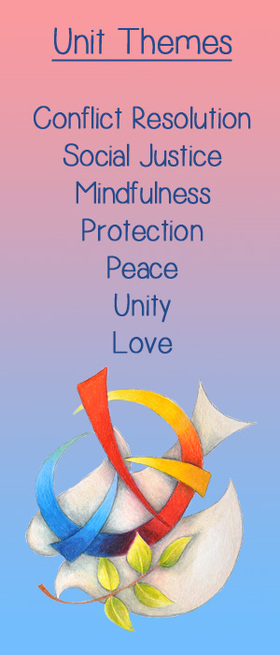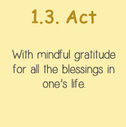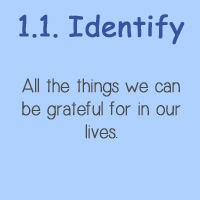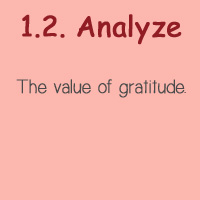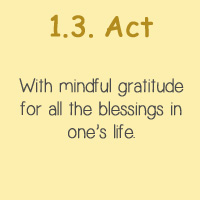Classroom Learning Activities
|
1. Practicing Mindfulness to Make Us Grateful
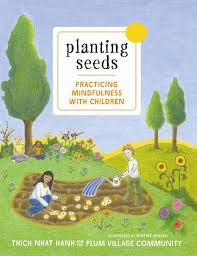
Planting Seeds: Practicing Mindfulness with Children is the fruit of decades of development and innovation in the Plum Village community's collective practice with children. Based on Thich Nhat Hanh's thirty years of teaching mindfulness and compassion to parents, teachers, and children, the book and enclosed CD covers a wide range of contemplative and fun activities parents and educators can do with their children or students. They are designed to help relieve stress, increase concentration, nourish gratitude and confidence, deal with difficult emotions, touch our interconnection with nature, and improve communication.
Planting Seeds offers insight, concrete activities, and curricula that parents and educators can apply in school settings, in their local communities or at home, in a way that is meaningful and inviting to children. The key practices presented include mindful breathing and walking, inviting the bell, pebble meditation, the Two Promises or ethical guidelines for children, children's versions of Touching the Earth and Deep Relaxation, eating meditation and dealing with conflict and strong emotions. Also included are the lyrics to the songs on the enclosed CD that summarize and reinforce the key teachings, as well as a chapter on dealing effectively with conflict in the classroom or difficult group. See more on Thich Nhat Hahn and his book: Planting Seeds: Practicing Mindfulness with Children |
Original Planting Seeds: The Power of Mindfulness for Children
Spreading Gratitude Rocks
"Don't just teach kids to count, teach them what counts." Gratitude has long been considered an invaluable virtue. In modern society however, we often undervalue, or forget, the importance of such virtues in our daily lives. With so many distractions and wonderful technological advances, our human connection to each other is suffering. These lessons are meant to reward and encourage grateful hearts and minds in our youth rather than nourish an attitude of entitlement. Gratitude is the key. It is the cornerstone to so many other great qualities and characteristics that make man….kind. Go here for ideas on how to teach and reinforce this positive character trait. Retrieved from Spreading Gratitude Rocks. |
|
2. The Magic of Kindness
Orly Wahba is here to talk to us about the magic of kindness. As a middle-school teacher, she wanted to make a difference in the life of her students, so she designed “Act of Kindness” cards. These super-simple cards contained directions such as “open the door for someone” or “invite someone to have lunch with you,” along with an instruction to pass on the card once you were done. She wanted her kids to see the ripple effect of kindness. One day, some construction workers were outside her house. It was hot out, so she brought them drinks — and kindness cards. One of them got a card with the instruction “call your mother and father and tell them how much you love them.” He hadn’t seen his parents in 10 years; he approached her, incredulous. He just needed the prompt. Wahba shows us a film she put together to tell the story of the world we all live in. “Sometimes we just need to change our perspective.” And she tells us about Life Vest Inside, the organization she founded ”because kindness keeps the world afloat.” |
Orly Wahba has developed a curriculum that is intended to promote acts of loving-kindness in the classroom. To find out more about it, go here.
|
Relevant Convention Articles
Article 3
1. In all actions concerning children, whether undertaken by public or private social welfare institutions, courts of law, administrative authorities or legislative bodies, the best interests of the child shall be a primary consideration.
2. States Parties undertake to ensure the child such protection and care as is necessary for his or her well-being, taking into account the rights and duties of his or her parents, legal guardians, or other individuals legally responsible for him or her, and, to this end, shall take all appropriate legislative and administrative measures.
3. States Parties shall ensure that the institutions, services and facilities responsible for the care or protection of children shall conform with the standards established by competent authorities, particularly in the areas of safety, health, in the number and suitability of their staff, as well as competent supervision.
Article 6
1. States Parties recognize that every child has the inherent right to life.
2. States Parties shall ensure to the maximum extent possible the survival and development of the child.
Article 38
1. States Parties undertake to respect and to ensure respect for rules of international humanitarian law applicable to them in armed conflicts which are relevant to the child.
2. States Parties shall take all feasible measures to ensure that persons who have not attained the age of fifteen years do not take a direct part in hostilities.
3. States Parties shall refrain from recruiting any person who has not attained the age of fifteen years into their armed forces. In recruiting among those persons who have attained the age of fifteen years but who have not attained the age of eighteen years, States Parties shall endeavour to give priority to those who are oldest.
4. In accordance with their obligations under international humanitarian law to protect the civilian population in armed conflicts, States Parties shall take all feasible measures to ensure protection and care of children who are affected by an armed conflict.
1. In all actions concerning children, whether undertaken by public or private social welfare institutions, courts of law, administrative authorities or legislative bodies, the best interests of the child shall be a primary consideration.
2. States Parties undertake to ensure the child such protection and care as is necessary for his or her well-being, taking into account the rights and duties of his or her parents, legal guardians, or other individuals legally responsible for him or her, and, to this end, shall take all appropriate legislative and administrative measures.
3. States Parties shall ensure that the institutions, services and facilities responsible for the care or protection of children shall conform with the standards established by competent authorities, particularly in the areas of safety, health, in the number and suitability of their staff, as well as competent supervision.
Article 6
1. States Parties recognize that every child has the inherent right to life.
2. States Parties shall ensure to the maximum extent possible the survival and development of the child.
Article 38
1. States Parties undertake to respect and to ensure respect for rules of international humanitarian law applicable to them in armed conflicts which are relevant to the child.
2. States Parties shall take all feasible measures to ensure that persons who have not attained the age of fifteen years do not take a direct part in hostilities.
3. States Parties shall refrain from recruiting any person who has not attained the age of fifteen years into their armed forces. In recruiting among those persons who have attained the age of fifteen years but who have not attained the age of eighteen years, States Parties shall endeavour to give priority to those who are oldest.
4. In accordance with their obligations under international humanitarian law to protect the civilian population in armed conflicts, States Parties shall take all feasible measures to ensure protection and care of children who are affected by an armed conflict.
Online Resources and References
- 6 Elements of Social Justice Education - Children's Literature annotated list for the elementary classroom.
- Art Educators - Teaching Ideas of Social Injustice Using Children's Literature by Sarah Ryder.
- British Columbia Ministry of Education - Teaching for Diversity and Social Justice Throughout the K-12 Curriculum: Making Space.
- Equitas - Educate. Empower. Change. - Advancing the equality, social justice, and respect for human dignity in Canada and around the world through education.
- Hooker, Karen E. & Fodor, Iris E. (2008). Teaching Mindfulness to Children. Gestalt Review, 12(1): 75-91. Retrieved from: http://www.mindfuleducation.org/mindfulnessforchildren.pdf
- It's Pronounced Metrosexual - A fantastic site on social injustice, sexuality, and gender issues.
- Life Vest Inside - Empowering people to engage in acts of love and kindness
- Oyler, Celia. (2011). Preparing teachers of young children to be social justice-oriented educators. Promoting Social Justice for Young Children. Retrieved from: http://www.academia.edu/1168846/Preparing_teachers_of_young_children_to_be_social_justice-oriented_educators
- Planting Seeds: Practicing Mindfulness with Children - the Plum Village Community Collective.
- Schmidt, Laurel. (2009). Stirring Up Justice. Teaching Social Responsibility. 66(8) 32-37. Retrieved from: http://www.ascd.org/publications/educational-leadership/may09/vol66/num08/Stirring-Up-Justice.aspx
- Spreading Gratitude Rocks
- The Dalai Lama Center for Peace and Education

